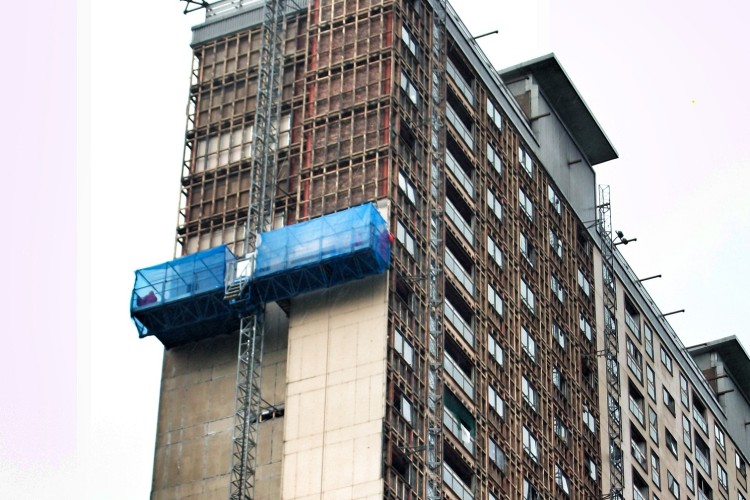In the past eight-years, Dundee-based Safedem has demolished some 55 high-rise tower blocks belonging to the Glasgow Housing Association (GHA), the registered social landlord which looks after the public housing in Scotland's biggest city.
However, the company is now facing its biggest challenge to date; the demolition of the 12 high-rise structures that constitute the notorious Red Road flats and which will shortly enter the record books as Europe’s current largest demolition project.
In all, the £15 million contract will involve the removal – by both explosive and mechanical means – a total of 360 storeys containing 1,450 homes. But it is not just the magnitude of the contract that sets it aside. The flats are literally riddled with asbestos, all of which has to be removed prior to the commencement of demolition works.
Designed in 1962 by architect Sam Bunton for Glasgow Corporation, the flats were constructed between 1964 and 1969 and were the tallest high-rise blocks in Europe at the time.
The Red Road flats were heralded as the solution to the housing crisis at that time in Glasgow, and were used by the local authority to re-house residents of Glasgow’s notorious tenement slums.
But like so many of the “cities in the skies” high-rise developments of the 1960s and 70s, Red Road has suffered with the passage of time. Less than a quarter century after they welcomed their first inhabitants and with declining tenant numbers, anti-social behaviour issues, and increased maintenance costs, Glasgow Housing Association took the decision to demolish the Red Road flats to clear the way for the next wave of regeneration.
Steel frame structure
The 32-storey structures posed some significant issues. Unusually for structures built in the UK, they were of a steel frame construction that allowed the architects to push the structures beyond the 20-storey levels achievable with more traditional concrete. As fire protection, the architects also specified a fire-resistant material to encapsulate the steel columns and beams throughout: asbestos. Local residents nicknamed construction workers the ‘White Mice’ as they emerged from the partly constructed buildings with their overalls covered in asbestos fibres.

Since being awarded the contract, Safedem has been involved in a pilot process comprising the first three blocks, tackling the removal of all the asbestos insulation products to steel columns and beams.
Methods of removal were developed and subject to notification procedures to the Health and Safety Executive. Subsequent air clearance certification procedures confirmed that all asbestos products had been removed, verified by third-party air monitoring.
The removal of all the asbestos products exposed the steel frame, allowing detailed structural investigations and metallurgical testing to be conducted on the steel frame.
“With the steel exposed it became evident that the structures were inconsistent with the limited construction drawings available,” says Safedem managing director William Sinclair. “On any given floor, steel gauges can vary from 24 mm to 127 mm. Cross bracings spanned over two or three floors but the brace locations are inconsistent through the structure.
“Some of this information was uncovered during the structures life with later additions, such as the external stairwells that were introduced in the 1980s.”
Steel frames of this height are difficult enough to demolish, but add in the inconsistent construction and the need for any preparatory works to conform to current building codes, and the Red Road flats become an extremely complex demolition challenge.
Safedem is currently completing their demolition design for the demolition of Phase 1 by explosives later in 2012. Although specific timings and methodologies are yet to be finalised, it is anticipated that at least one of the outlying blocks will be deconstructed using non-explosive, top-down methods due to its proximity to nearby housing which will be retained when the Red Road flats are cleared.
Got a story? Email news@theconstructionindex.co.uk
.png)


